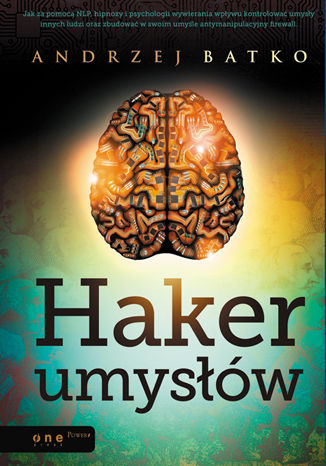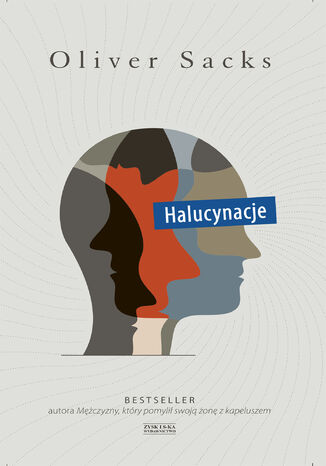Kategorie
-
- Bitcoin
- Bizneswoman
- Coaching
- Controlling
- E-biznes
- Ekonomia
- Finanse
- Giełda i inwestycje
- Kompetencje osobiste
- Komputer w biurze
- Komunikacja i negocjacje
- Mała firma
- Marketing
- Motywacja
- Multimedialne szkolenia
- Nieruchomości
- Perswazja i NLP
- Podatki
- Polityka społeczna
- Poradniki
- Prezentacje
- Przywództwo
- Public Relation
- Raporty, analizy
- Sekret
- Social Media
- Sprzedaż
- Start-up
- Twoja kariera
- Zarządzanie
- Zarządzanie projektami
- Zasoby ludzkie (HR)
-
- Architektura i wnętrza
- BHP
- Biznes i Ekonomia
- Dom i ogród
- E-Biznes
- Ekonomia i finanse
- Ezoteryka
- Finanse
- Finanse osobiste
- Firma
- Fotografia
- Informatyka
- Kadry i płace
- Kobieca
- Komputery, Excel
- Księgowość
- Kultura i literatura
- Naukowe i akademickie
- Ochrona środowiska
- Opiniotwórcze
- Oświata
- Podatki
- Podróże
- Psychologia
- Religia
- Rolnictwo
- Rynek książki i prasy
- Transport i Spedycja
- Zdrowie i uroda
-
- Aplikacje biurowe
- Bazy danych
- Bioinformatyka
- Biznes IT
- CAD/CAM
- Digital Lifestyle
- DTP
- Elektronika
- Fotografia cyfrowa
- Grafika komputerowa
- Gry
- Hacking
- Hardware
- IT w ekonomii
- Pakiety naukowe
- Podręczniki szkolne
- Podstawy komputera
- Programowanie
- Programowanie mobilne
- Serwery internetowe
- Sieci komputerowe
- Start-up
- Systemy operacyjne
- Sztuczna inteligencja
- Technologia dla dzieci
- Webmasterstwo
-
- Antologie
- Ballada
- Biografie i autobiografie
- Dla dorosłych
- Dramat
- Dzienniki, pamiętniki, listy
- Epos, epopeja
- Esej
- Fantastyka i science-fiction
- Felietony
- Fikcja
- Humor, satyra
- Inne
- Klasyczna
- Kryminał
- Literatura faktu
- Literatura piękna
- Mity i legendy
- Nobliści
- Nowele
- Obyczajowa
- Okultyzm i magia
- Opowiadania
- Pamiętniki
- Podróże
- Poemat
- Poezja
- Polityka
- Popularnonaukowa
- Powieść
- Powieść historyczna
- Proza
- Przygodowa
- Publicystyka
- Reportaż
- Romans i literatura obyczajowa
- Sensacja
- Thriller, Horror
- Wywiady i wspomnienia
-
- Archeologia
- Bibliotekoznawstwo
- Filmoznawstwo
- Filologia
- Filologia polska
- Filozofia
- Finanse i bankowość
- Geografia
- Gospodarka
- Handel. Gospodarka światowa
- Historia i archeologia
- Historia sztuki i architektury
- Kulturoznawstwo
- Lingwistyka
- Literaturoznawstwo
- Logistyka
- Matematyka
- Medycyna
- Nauki humanistyczne
- Pedagogika
- Pomoce naukowe
- Popularnonaukowa
- Pozostałe
- Psychologia
- Socjologia
- Teatrologia
- Teologia
- Teorie i nauki ekonomiczne
- Transport i spedycja
- Wychowanie fizyczne
- Zarządzanie i marketing
-
- BHP
- Historia
- Kodeks drogowy. Prawo jazdy
- Nauki prawne
- Ochrona zdrowia
- Ogólne, kompendium wiedzy
- Podręczniki akademickie
- Pozostałe
- Prawo budowlane i lokalowe
- Prawo cywilne
- Prawo finansowe
- Prawo gospodarcze
- Prawo gospodarcze i handlowe
- Prawo karne
- Prawo karne. Przestępstwa karne. Kryminologia
- Prawo międzynarodowe
- Prawo międzynarodowe i zagraniczne
- Prawo ochrony zdrowia
- Prawo oświatowe
- Prawo podatkowe
- Prawo pracy i ubezpieczeń społecznych
- Prawo publiczne, konstytucyjne i administracyjne
- Prawo rodzinne i opiekuńcze
- Prawo rolne
- Prawo socjalne, prawo pracy
- Prawo Unii Europejskiej
- Przemysł
- Rolne i ochrona środowiska
- Słowniki i encyklopedie
- Zamówienia publiczne
- Zarządzanie
-
- Afryka
- Albumy
- Ameryka Południowa
- Ameryka Środkowa i Północna
- Australia, Nowa Zelandia, Oceania
- Austria
- Azja
- Bałkany
- Bliski Wschód
- Bułgaria
- Chiny
- Chorwacja
- Czechy
- Dania
- Egipt
- Estonia
- Europa
- Francja
- Góry
- Grecja
- Hiszpania
- Holandia
- Islandia
- Litwa
- Łotwa
- Mapy, Plany miast, Atlasy
- Miniprzewodniki
- Niemcy
- Norwegia
- Podróże aktywne
- Polska
- Portugalia
- Pozostałe
- Przewodniki po hotelach i restauracjach
- Rosja
- Rumunia
- Słowacja
- Słowenia
- Szwajcaria
- Szwecja
- Świat
- Turcja
- Ukraina
- Węgry
- Wielka Brytania
- Włochy
-
- Filozofie życiowe
- Kompetencje psychospołeczne
- Komunikacja międzyludzka
- Mindfulness
- Ogólne
- Perswazja i NLP
- Psychologia akademicka
- Psychologia duszy i umysłu
- Psychologia pracy
- Relacje i związki
- Rodzicielstwo i psychologia dziecka
- Rozwiązywanie problemów
- Rozwój intelektualny
- Sekret
- Seksualność
- Uwodzenie
- Wygląd i wizerunek
- Życiowe filozofie
-
- Bitcoin
- Bizneswoman
- Coaching
- Controlling
- E-biznes
- Ekonomia
- Finanse
- Giełda i inwestycje
- Kompetencje osobiste
- Komunikacja i negocjacje
- Mała firma
- Marketing
- Motywacja
- Nieruchomości
- Perswazja i NLP
- Podatki
- Polityka społeczna
- Poradniki
- Prezentacje
- Przywództwo
- Public Relation
- Sekret
- Social Media
- Sprzedaż
- Start-up
- Twoja kariera
- Zarządzanie
- Zarządzanie projektami
- Zasoby ludzkie (HR)
-
- Antologie
- Ballada
- Biografie i autobiografie
- Dla dorosłych
- Dramat
- Dzienniki, pamiętniki, listy
- Epos, epopeja
- Esej
- Fantastyka i science-fiction
- Felietony
- Fikcja
- Humor, satyra
- Inne
- Klasyczna
- Kryminał
- Literatura faktu
- Literatura piękna
- Mity i legendy
- Nobliści
- Nowele
- Obyczajowa
- Okultyzm i magia
- Opowiadania
- Pamiętniki
- Podróże
- Poezja
- Polityka
- Popularnonaukowa
- Powieść
- Powieść historyczna
- Proza
- Przygodowa
- Publicystyka
- Reportaż
- Romans i literatura obyczajowa
- Sensacja
- Thriller, Horror
- Wywiady i wspomnienia
-
- Filozofie życiowe
- Komunikacja międzyludzka
- Mindfulness
- Ogólne
- Perswazja i NLP
- Psychologia akademicka
- Psychologia duszy i umysłu
- Psychologia pracy
- Relacje i związki
- Rodzicielstwo i psychologia dziecka
- Rozwiązywanie problemów
- Rozwój intelektualny
- Sekret
- Seksualność
- Uwodzenie
- Wygląd i wizerunek
- Życiowe filozofie
Hakeem Olajuwon zakończył swoją sportową karierę ponad dwie dekady temu, jednak wciąż jest liderem w ilości zablokowanych rzutów. Prawdziwa żyjąca legenda NBA i organizacji Houston Rockets, dla których zdobył dwa mistrzostwa NBA. Człowiek, który zrewolucjonizował pozycję centra w ówczesnej koszykówce, pokazując światu nie tylko warunki fizyczne, ale również finezję i technikę. Jego słynny zwód The Dream Shake jest równie znany, co legendarny Skyhook Kareema Abdul-Jabbara czy Fade Away Jumper Michaela Jordana z charakterystycznie wyciągniętym językiem na brodę. Jakim był człowiekiem i jakie wartości były dla niego fundamentalne? Dlaczego zdecydował się na przyjęcie amerykańskiego obywatelstwa, rezygnując z gry dla Nigerii? Jak wiele wyrzeczeń kosztował go pościg za marzeniami i mistrzowskimi tytułami? Sprawdź kulisy kariery jednego z najlepszych centrów w historii NBA i sprawdź, jak spełnił się jego amerykański sen!
Jak za pomocą NLP, hipnozy i psychologii wywierania wpływu kontrolować umysły innych ludzi lub zbudować w swoim umyśle antymanipulacyjny firewall? Złam kod ludzkiej podświadomości! Czy widziałeś hollywoodzką produkcję Klik - i robisz, co chcesz? Główny bohater filmu kupuje nowego pilota, który, oprócz telewizora, uruchamia jeszcze inne domowe urządzenia… oraz steruje psem, żoną i całym otaczającym go światem. Scenariusz nie jest najwyższych lotów, ale bez wątpienia jest to historia wysoce prawdopodobna! I to historia, która może przytrafić się Tobie! Wyobraź sobie, że masz możliwość buszowania w umysłach innych i kontrolowania swojego własnego mózgu. Że potrafisz obejść wszystkie psychiczne zabezpieczenia, rozszyfrować hasła i kody PIN, tak jak robią to codziennie hakerzy włamujący się do systemów komputerowych. Jesteś handlowcem, rozmawiasz z klientem - klik, klik, klik - i modyfikujesz w jego umyśle program sterujący zainteresowaniami: sprawiasz, że zaczyna się interesować produktem, który mu oferujesz. Albo spotykasz kogoś, kto Cię pociąga - klik, klik, klik - i już instalujesz w umyśle tej osoby fantazje na Twój temat, a w jej uczuciach pożądanie oraz fascynację Twoją osobą… Tak. Tacy "hakerzy umysłów" naprawdę istnieją i codziennie wywierają na Ciebie wpływ - na Twoje myśli, uczucia, decyzje i zachowania. Zostań jednym z nich i zacznij kontrolować emocje ludzi, z którymi rozmawiasz, wywoływać w nich wybrane przez Ciebie pragnienia i sprawiać, że będą robić to, o co ich poprosisz. Programista mentalnych systemów: Sprzedaż, marketing i prezentacja perswazyjna. Ogłoszenia dla ludzkiego umysłu. Przyciąganie i przytrzymywanie uwagi słuchacza lub czytelnika. Kotwice, czyli "nasza piosenka". Kontrolowanie własnych emocji i reakcji. Zmiana wiedzy w naturalne umiejętności.
Hakowanie Androida. Kompletny przewodnik XDA Developers po rootowaniu, ROM-ach i kompozycjach
Will Verduzco (Contributor), Jason Tyler (Author)
Sprawdź, co potrafi Twój telefon! System operacyjny Android ma rzeszę fanów. Zdobył ich dzięki swym niezwykłym możliwościom, imponującej elastyczności oraz ogromowi dostępnych aplikacji. System ten łączy w sobie prostotę ważną dla początkujących użytkowników z możliwościami rozwoju i ingerencji istotnymi dla tych zaawansowanych. Jeżeli masz pomysł, jak ulepszyć Twój system operacyjny, jeżeli chcesz dostosować go do swoich potrzeb, trafiłeś na właściwą książkę! Dzięki niej dowiesz się, jak skutecznie zrootować Twoje urządzenie i przejąć nad nim pełną kontrolę. To jest pierwszy i najważniejszy krok. Gdy go wreszcie uczynisz, świat pełen różnych wersji ROM-ów, modyfikacji i atrakcyjnych funkcjonalności stanie przed Tobą otworem. W trakcie lektury nauczysz się modyfikować wygląd i styl Twojego Androida, tworzyć pełną kopię bezpieczeństwa oraz wydłużać życie baterii. Znajdziesz tu również szczegółowe informacje na temat rootowania konkretnych modeli telefonów oraz tabletów. Książka ta jest idealną pozycją dla wszystkich chcących wycisnąć jeszcze więcej z telefonów z systemem Android. Dzięki tej książce: przygotujesz środowisko pracy zrootujesz swój telefon dostosujesz wygląd systemu zainstalujesz niestandardowy ROM Naucz swój telefon nowych, fantastycznych sztuczek!
- Wykończą nas z dużej odległości - powiedział zimno Noeff. - Nie można się ruszyć, bo zobaczą i strzały będą celniejsze. Ile masz amunicji? - Pięć sztuk - odpowiedział Wiktor. - To za mało, żeby ich odgonić - ocenił Noeff. - Ja mam może ze trzy strzały. Nie mamy wyjścia, musimy się cofać. Oni mają ze dwa karabiny i pewno dosyć amunicji. Cholerny księżyc, droga widoczna jak w dzień, a my na tej drodze. - Sobaki, czorty wy polskie, job twoju mat, - dobiegło ich z dali. - Odchodzimy - powiedział stanowczo Noeff. - Odbiegajcie po kilkadziesiąt kroków, pojedynczo, schyleni. Ja pójdę ostatni. Pierwsza pobiegła Halina, ale ledwie jej cień przemknął po drodze, gdy rozległy się strzały. Wkrótce chłopi zaczęli się zbliżać. Pod koniec 1918 roku inżynier Wiktor Powalski wraca z frontu do rodziny w Piotrogrodzie. Wkrótce po przyjeździe zostaje telegraficznie wezwany do rodziców mieszkających w małym polskim majątku pod Dryssą. Zastaje majątek zniszczony, a sam, aresztowany przez lokalną Czekę, trafia do więzienia. W celi spotyka dawnego sąsiada rodziców, któremu w obliczu śmierci daje słowo honoru, że uratuje jego córkę Halinę przebywającą w tym samym więzieniu. Po brutalnym śledztwie Wiktor Powalski, oskarżony o próbę dywersji w Dryssie, zostaje skazany na śmierć. Udaje mu się uciec, i wówczas staje przed dylematem: iść na ratunek Halinie, jak obiecał jej ojcu, czy wracać do żony i dzieci do Piotrogrodu. Od tego momentu rozpoczyna się niezwykła podróż do Polski przypadkowo zebranej grupki bohaterów, którzy muszą unikać niebezpieczeństw czyhających w zrewolucjonizowanej Rosji, uciec przed pościgiem Czeki i przejść front polsko-sowiecki. Zmierzają do Polski, której w ogóle nie znają. Czy dotrą do celu i czy Polska spełni ich oczekiwania? Witold Jerzy Ławrynowicz urodził się 10 stycznia 1955 r. w Warszawie. W trakcie studiów na wydziale chemicznym Politechniki Warszawskiej rozpoczął działalność w Klubie Miłośników Dawnych Militariów Polskich, od listopada 1981 r. koncentrując swoje zainteresowania na broni pancernej. Stan wojenny 13 grudnia 1981 r. zastał W. Ławrynowicza w Londynie i zmusił go do emigracji. W roku 1983 podjął studia doktoranckie na uniwersytecie Rutgers w New Jersey. Po ich ukończeniu rozpoczął pracę w przemyśle farmaceutycznym w Kanadzie, a później w USA. Od 1995 r. jest członkiem Klubu Miłośników Dawnych Militariów Polskich im. A. Zaręby w Nowym Jorku. Na emigracji publikował w polonijnym "Głosie Polskim" i "Armoured Fighting Vehicles News" w Kanadzie, "Nowym Dzienniku", "Polish Heritage News" oraz "Polonia Today" w Stanach Zjednoczonych, "Przeglądzie Kawalerii i Broni Pancernej" w Wielkiej Brytanii, "Relacjach" w Szwecji i w ukazujących się w Polsce periodykach: "MARS", "Archeologia Wojskowa", "Mundur i Broń", "Glaukopis" oraz "Przegląd Historyczno-Wojskowy" oraz w tygodniku "Nowa Technika Wojskowa". Autor książek: Droga do Blitzkriegu. Historia i rozwój niemieckiej broni pancernej do wybuchu II wojny światowej , Prekursorzy. Pierwsze brytyjskie czołgi .
Halina. Dziś już nie ma takich kobiet
Książka Górska Roku 2019 Grand Prix Festiwalu Górskiego im. Andrzeja Zawady Pierwsze szczyty zdobywała w chustce na głowie, w czasach, gdy kobiety w górach były traktowane przez wspinaczy jak dodatkowy plecak. To od niej zaczął się alpinizm kobiecy! Uznanie zdobyła spektakularnie. Ta droga uchodziła za przejście dla szaleńców. Zwłaszcza od czasu tragicznego wypadku z 1929 roku, utrwalonego przez Juliana Przybosia w wierszu Z Tatr. Siostry Skotnicówny wyszły ze swojego zakopiańskiego domu, by samodzielnie przejść Zamarłą Turnię. I nigdy nie wróciły do domu. Od tamtej pory żaden kobiecy zespół nie próbował pójść ich szlakiem, utrwalając fatalistyczny mit szczytu. Aż do lata 1960 roku, kiedy rankiem Halina Krüger-Syrokomska wyruszyła z Morskiego Oka, by niedługo być na ustach wszystkich i stać się środowiskową legendą. A potem się zaczęło Pierwsza Europejka na ośmiotysięczniku, polski rekord wysokości kobiet w Pamirze, wiele pierwszych kobiecych przejść w Tatrach, drogi w Alpach francuskich i szwajcarskich, zdobycie filaru Trollryggen w Norwegii. Należała do pierwszego pokolenia powojennych wspinaczy. Brała udział we wszystkich najważniejszych wyprawach swoich czasów, usilnie promując ideę wspinania się w kobiecych zespołach. Aż nagle odmówiono jej paszportu Sukcesy Haliny przetarły drogę na najwyższe szlaki świata kolejnym himalaistkom, w tym Wandzie Rutkiewicz, która wielokrotnie towarzyszyła jej podczas wypraw. Te dwie czołowe polskie himalaistki różniło wiele. Nade wszystko: Krüger-Syrokomska nie chciała zginąć w górach Góry? To ważne jak cholera, ale oprócz tego jest też inne życie mawiała. Po olbrzymim sukcesie Simony oraz Wandy Anna Kamińska powraca w góry z fascynującą opowieścią o Halinie Krüger-Syrokomskiej kobiecie, niczym Simona Kossak, nieodkrytej, a zarazem himalaistce, bez której nie byłoby Wandy Rutkiewicz.
Hallelujah p. Jarosławowi Iwaszkiewiczowi Niebo jak biała powierzchnia milczenia, pod niebem płaska obraca się ziemia. Sen u powiek omyty. Stoi prosty kształt podobny do fontanny rytej w ścianie skał. Zejdźcie, formy płomienne! Chłodna ziemia zgasi i ostudzi, jak metal rozgrzany, postaci, zatrzyma i przemieni w pomnik żółta glina, aby była nazwana przez ziemię przyczyna. Biją źródła mosiężne, dźwięk przechodzi w światło. Rosną liście płomieni w obłoku, co drżąc rozstępuje się drzewom jak ramiona snom, i grzmią rumaki burzy, nim je wiatry zatną. [...]Krzysztof Kamil BaczyńskiUr. 22 stycznia 1921 r. w Warszawie Zm. 4 sierpnia 1944 r. w Warszawie Najważniejsze dzieła: Pokolenie, Historia, Bez imienia, Dwie miłości, Z głową na karabinie Poeta, rysownik. Twórczość poetycką rozpoczął już jako uczeń gimnazjum im. Stefana Batorego w Warszawie, gdzie w 1939 r. zdał maturę. Związany ze środowiskiem młodzieży lewicowej, m.in. z organizacją Spartakus działającą półlegalnie w szkołach średnich. W czasie okupacji niemieckiej zbliżył się do ugrupowań socjalistycznych, wydających podziemne pisma ?Płomienie? i ?Droga?. Od 1943 r. uczestniczył w tajnych kompletach polonistycznych, w tymże roku wstąpił do Harcerskich Grup Szturmowych, które stały się zalążkiem batalionu AK ?Zośka? oraz ukończył konspiracyjną szkołę podchorążych rezerwy. Uczestnik powstania warszawskiego; poległ w walce przy Placu Teatralnym (Pałac Blanka); w parę tygodni później zginęła w powstaniu żona poety Barbara, którą poślubił w 1942 r. Nie licząc dwóch zbiorków odbitych na hektografie w 7 egzemplarzach w 1940 r. i kilku wierszy w antologiach Pieśń niepodległa i Słowo prawdziwe, zdążył ogłosić, pod pseudonimem Jan Bugaj, dwa konspiracyjne zbiory: Wiersze wybrane (1942) i Arkusz poetycki (1944) wydane nakładem ?Drogi?. Kupując książkę wspierasz fundację Nowoczesna Polska, która propaguje ideę wolnej kultury. Wolne Lektury to biblioteka internetowa, rozwijana pod patronatem Ministerstwa Edukacji Narodowej. W jej zbiorach znajduje się kilka tysięcy utworów, w tym wiele lektur szkolnych zalecanych do użytku przez MEN, które trafiły już do domeny publicznej. Wszystkie dzieła są odpowiednio opracowane - opatrzone przypisami oraz motywami.
Niespełna dwudziestoletnia amerykanka w tarapatach - brzmi zwyczajnie i nudno? Nic bardziej mylnego, jeśli masz do czynienia z pamiętnikiem tak pokręconej autorki, jaką jest Hallie!Życie dziewczyny zostaje wywrócone do góry nogami, gdy wkracza w nie Afrodyta (bogini piękna i płodności) wraz z przedziwnymi wieściami. Bohaterka dostaje zadanie, które będzie musiała wykonać - czy tego chce, czy nie.Zmagając się z kolejnymi przeszkodami, których po drodze do celu nie brakuje, zdobywa ona niesamowitą wiedzę, nowy wygląd, prawdziwą przyjaźń i... miłość.Przezabawna historia, stworzona ze skrawków mitologii greckiej i mieszaniny starożytności z nowoczesnością.Pomysł na książkę przyniósł mi sen, który miałam na rok przed spisaniem pamiętnika o dzwudziestoletniej córce Afrodyty.Fabuła przypomina książki z serii o Percym Jacksonie, Ricka Riordana, a także Pamiętniki Księżniczki, Meg Cabot. Rodzice Hallie Jinkins giną w pożarze w jej szkole podczas przedstawienia, w którym brała udział jako jeszcze mała dziewczynka. Rodzina zastępcza, do której trafiła nie potrafiła się nią zająć. Wychowana przez Jenny, opiekunkę z domu dziecka, która wtedy miała pod opieką także wiele innych dzieci, dziewczyna w wieku 18 lat wyjeżdża do Nowego Jorku ze swoją przyjaciółką Hayden w poszukiwaniu szczęścia.Autorka Martyna Barko(ur. 26 Września 1992r.) wychowywana, do 15. roku życia, w małej miejscowości pod Opolem, w 2007 roku przeprowadziła się do Gravesend, w hrabstwie Kent (Wielka Brytania). Kontynuowała tam naukę, uczęszczając do szkoły St George's CE oraz North West Kent College. Swoją przygodę z pisaniem zaczęła już w wieku 11 lat, ale pasja rozwinęła się dopiero w 2008 roku, kiedy to jej blogowe opowiadania stawały się coraz bardziej czytywane wśród internautów. Zainteresowanie swoją osobą zdobyła także pisząc dla znanych portali internetowych pod innym nazwiskiem.
W Halloween nikt i nic nie umknie mrocznej wyobraźni mistrzów polskiego horroru! Czy jesteście gotowi zmierzyć się z prawdziwą grozą? W czas Halloween, kiedy umarli przedostają się do świata żywych, a żywi muszą się zmierzyć z niewyobrażalnym, może się wydarzyć wszystko. Wiedzą o tym tacy pisarze, jak Izabela Szolc, Magdalena Kałużyńska, Katarzyna Rogińska, Łukasz Orbitowski, Krzysztof Maciejewski, Kazimierz Kyrcz, Bartosz Czartoryski, Łukasz Śmigiel, Robert Cichowlas, Piotr Rowicki i Dawid Kain. Niebawem dowiecie się i wy…
Halloween: Impreza firmowa opowiadanie erotyczne
Zapadła cisza, nieznajomy pociągnął ją za rękę i pchnął na ścianę kawałek dalej, zaczął całować, gdy tamtych dwóch wyszło zza rogu, jego dłonie błądziły już po jej ciele, a ona schowała się w jego ciemnej marynarce. Miał dłuższe włosy, które teraz zasłaniały jej twarz. Mężczyźni minęli ich szybko, nie zwracając uwagi na kolejną całująca się po kątach parę, a gdy zostali sami, oderwał usta od jej ust i się odsunął. Przepraszam powiedział, uśmiechając się nieśmiało nie chciałem, aby zwrócili na nas uwagę. Drżała, trochę ze strachu, trochę z zimna, które pojawiło się wraz ze wspomnieniami, a trochę przez ten pocałunek, niespodziewany, dobry, przyjemnie zaskakujący. Mężczyzna nie miał stroju, marynarka była ciemna jak u kelnerów, nierzucającą się w oczy. Wyglądał trochę jak ochroniarz, a teraz skinął jej głową i ruszył w stronę, z której wrócili oni. Stała jeszcze chwilę, zdezorientowana. Zatrzymał się i spojrzał na nią. Masz cudowne usta. Odszedł. Serce biło jej mocno, zbyt mocno." Romansu z szefem Emilia unika jak ognia: już kiedyś się sparzyła, ale udało jej się pozbierać i rozpocząć życie na nowo. Jednak gdy dostrzega byłego przełożonego na firmowym balu maskowym z okazji Halloween, a dodatkowo usłyszała coś, czego nie powinna, jest zmuszona skonfrontować się z demonami przeszłości. Tym razem nie jest jednak sama... pomaga jej tajemniczy mężczyzna, który szybko rozbudza jej pożądanie. Kim jest i jak zakończy się ten wybuchowy wieczór?
"Halo? Sprzedaż!" to poradnik nowej psychologii sprzedaży, który sprzeciwia się bezemocjonalnym, nieelastycznym gotowcom mechanicznego i automatycznego sprzedawania. Jego zadaniem jest zainspirować czytelnika do inteligentnej i zorientowanej na człowieka sprzedaży, w której relacja między ludźmi daje podwalinę pod długoterminowy sukces. Tylko ludzka sprzedaż przez telefon buduje prawdziwą wartość i przewagę rynkową oferowanej marki. Zawarte tutaj wskazówki i inspiracje przeniosą sprzedaż czytelnika oraz zdolności wywierania wpływu na nowy, jeszcze wyższy poziom skuteczności. Taki, z którego nie chce się już wracać. Autor poradnika, Aleksander (Olek) Sienkiewicz, od lat związany jest ze sprzedażą, marketingiem i zarządzaniem. Podczas swojej kariery sprzedawał zarówno w kanale B2B, jak i B2C. Na długiej liście produktów i usług, które sprzedawał, znalazły się m.in.: usługi reklamowe, czasy antenowe, produkty licencyjne, praca tymczasowa i doradztwo personalne, produkty ekologiczne, szkolenia, usługi konsultingowe, produkty kosmetyczne i wiele innych. Nieustanny pasjonat skutecznej komunikacji reklamowej w myśl idei, którą przemyca we wszystkich swoich realizacjach: Wyróżniaj się i doradzaj z elegancją. Na co dzień trener sprzedaży i motywacji osiągnięć, współpracujący z firmami zarówno z polskim, jak i zagranicznym kapitałem. Autor unikatowych szkoleń z zakresu nowej psychologii sprzedaży (m.in.: 5 Kroków Skutecznej Sprzedaży, SuperSeller 1, 2) oraz poczytnych artykułów, publikowanych w portalach poświęconych sprzedaży i zarządzaniu. Ma na swoim koncie szkolenia realizowane poza granicami Polski, podczas których na sali miał okazję pracować z uczestnikami z całego świata. Właściciel firmy doradczo-szkoleniowej, działającej pod marką OlekSienkiewicz.pl, partner zarządzający w wielu biznesowych inicjatywach, m.in. współorganizator jednego z pierwszych i największych w Polsce eventów motywacyjnych. Prywatnie mąż, ojciec i pasjonat motoryzacji.
Mr. Barron, a wealthy banker on Broad Street, was sitting in his office when a young newspaperman rushed into his office. It was an ordinary boy who delivered a newspaper every day. The boy came to the banker with urgent news. He claims that two employees behind his back steal money from him. Would he believe a simple guy?
“Halszka” to książka Józefa Ignacego Kraszewskiego, polskiego pisarza i publicysty oraz autora największej liczby wydanych książek w historii literatury polskiej i siódmego autora na świecie pod tym względem. “Halszka” to dramat w trzech aktach, napisana przez jednego z najwybitniejszych polskich pisarzy XIX wieku. “Takie Kniaziów kochanie! — O! biada nam biada! Jeśli z niska wyszedłszy podlecim wysoko — Kniaź orzeł nas uniesie, gdzie nie dojrzy oko — Kniaź orzeł tam zostanie — dziewczyna upada — Na cóż mi było kazać kochać ciebie? I na co brać mnie było z spokojnego domu? Znalazłbyś równą sobie na kniaziowskiém niebie, I żył z nią tak szczęśliwy! bez troski, bez sromu! Jam biedna! Nie myśl Kniaziu, że gdym tobie cała, Siebie i duszę swoją i życie oddała — Żem z sukniami, kobiécy wstyd z siebie zrzuciła? — O! nie — i ja się wstydzę! — Gdy twoi dworzanie — Szydzą, wskazując moje kozacze ubranie; — Krew mi się pali w sercu, w ziemię bym się skryła, Lub gdy wieczorną porą, do twojéj komnaty Idę, a oni w kącie zasiadłszy na czaty — Wołają za mną — A dokąd kozacze? — Myślisz że się nie wstydzę, że wówczas nie płaczę?” Fragment
Halucynacje zawsze odgrywały ważną rolę w naszym życiu umysłowym i w naszej kulturze. Można się nawet zdziwić tym, jak wielką rolę doświadczenie halucynacji odegrało w naszej sztuce, folklorze, nawet religii Czy geometryczne wzorce towarzyszące migrenie i innym dolegliwościom legły u podstaw motywów, które występują w sztuce Aborygenów? Czy to z halucynacji z udziałem liliputów (wcale nie tak rzadkich) zrodziły się elfy, chochliki i krasnale? Czy to nie z przepojonych lękiem nocnych halucynacji, kiedy jakaś obca, wroga istota szarpie nami i nas dusi, zrodziły się wizje demonów, czarownic, złowrogich przybłędów? Czy ekstatyczne ataki, w rodzaju tych, których doświadczał Dostojewski, odegrały jakąś rolę w naszym poczuciu boskości? Czy doświadczenia oderwania od ciała stały się inspiracją do przypuszczeń, że można istnieć także i bez niego? Czy niesubstancjalność halucynacji podsyca wiarę w zjawy i duchy? Dlaczego we wszystkich znanych nam kulturach szukano i znajdowano halucynogenne substancje, które przede wszystkim wykorzystywano do celów sakralnych? Na te i wiele innych pytań z tym związanych próbuje odpowiedzieć Oliver Sacks w swojej najnowszej bestsellerowej książce Halucynacje. Z jednej strony jest ona swego rodzaju antologią halucynacji, w której opisuje on na podstawie konkretnych przypadków doświadczenia i siłę ich wpływu na tych, którzy ich doznają, co pozwala nam uzmysłowić sobie, jak szeroki jest zakres i jak bogate zróżnicowanie doświadczeń halucynacyjnych, stanowiących istotną składową kondycji ludzkiej. Z drugiej natomiast jest próbą odpowiedzi na podstawowe pytanie o źródła i znaczenie halucynacji dla psychiki człowieka, halucynacja bowiem co udowadnia doktor Sacks - to zupełnie swoista kategoria życia świadomości i umysłu.
Nie pamiętam, co miałam zrobić. Nieustannie. Jestem pewna, że nie pamiętam, co miałam zrobić, bo co chwilę muszę coś zrobić w telefonie. Sprawdzić, czy nikt nie napisał na mesendżerze. Sprawdzić maila. Odpowiedzieć na maila. Coś zobaczyć. Tylko nie pamiętam co. Zamówić herbatę na allegro. I coś jeszcze. Nie pamiętam co. Odpowiedzieć na wiadomość mężowi. Czekać, aż mi odpisze. W międzyczasie odpowiedzieć na wiadomość koleżance, z którą ostatni raz rozmawiałam trzy miesiące temu, na temat czegoś, o czym wtedy rozmawiałyśmy. Mam wrażenie, że połowa mojego życia jest wymyślona, ponieważ dzieje się w telefonie, jest powiadomieniami, jest rozmowami, które nie są rozmowami tylko nieustającą możliwością pisemnej rozmowy. To jest taka gra z tabliczki bh "przestań robić to, co robisz"
W monografii przedstawiono wyniki badań uciążliwego hałasu niskoczęstotliwościowego występującego w budynkach mieszkalnych. Omówiono oddziaływanie infradźwięków i hałasów niskoczęstotliwościowych na organizm człowieka w oparciu o dane literaturowe oraz przedstawiono kryteria oceny ich uciążliwości stosowane w różnych krajach. Na podstawie własnych badań doświadczalnych autorka dokonała przeglądu źródeł hałasów niskoczęstotliwościowych występujących w budynkach mieszkalnych w Polsce i zestawiła wyniki pomiarów hałasu od urządzeń instalowanych w budynku, takich jak: pompy w hydrowęzłach, transformatory, wentylatory, klimatyzatory, agregaty chłodnicze itp. Zaprezentowano wyniki wykonanych pod nadzorem autorki badań epidemiologicznych wpływu długotrwałego narażenia na hałas niskoczęstotliwościowy na zdrowie mieszkańców oraz badań laboratoryjnych progów detekcji dźwięków o niskich częstotliwościach. W oparciu o wyniki wykonanych badań autorka proponuje własną metodę oceny uciążliwości hałasów niskoczęstotliwościowych i określa graniczne, bezpieczne i nieuciążliwe dla mieszkańców poziomy hałasu w pomieszczeniach mieszkalnych.
Hałas zawodowy a normy bezpieczeństwa: jakie kroki powinien podjąć pracodawca
Odkryj klucz do zdrowszego środowiska pracy z e-bookiem "Hałas zawodowy a normy bezpieczeństwa: strategie ochrony pracowników". Dowiedz się, jak skuteczne zarządzanie hałasem może zwiększyć wydajność pracowników, zmniejszając stres i poprawiając ogólne samopoczucie. Poznaj metody, które pomogą Ci spełnić obowiązujące normy bezpieczeństwa, chroniąc zdrowie Twoich pracowników i unikając potencjalnych sankcji prawnych. W e-booku znajdziesz odpowiedzi na kluczowe pytania: - Jakie rodzaje hałasu wpływają na Twoich pracowników i jak je rozpoznać? - Skąd pochodzi przemysłowy hałas i jak minimalizować jego źródła? - Jakie skutki dla zdrowia może mieć hałas i jak ich unikać dzięki efektywnym strategiom ochrony? - Jakie są najlepsze praktyki w ocenie i dokumentacji ryzyka zawodowego związanego z hałasem? - Jakie kroki należy podjąć, gdy poziomy hałasu przekroczą dozwolone normy, aby zapewnić bezpieczeństwo pracowników? - Jakie korzyści przynosi redukcja hałasu nie tylko dla pracowników, ale także dla całej organizacji? Każdy pracodawca zobowiązany jest do ochrony swoich pracowników przed szkodliwym wpływem hałasu. Ten e-book wyposaży Cię w narzędzia i wiedzę, by skutecznie wykonać to zadanie, poprawiając jakość życia zawodowego swojego zespołu i budując kulturę bezpieczeństwa w miejscu pracy.
















